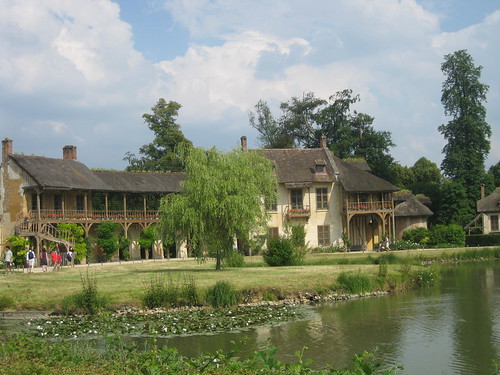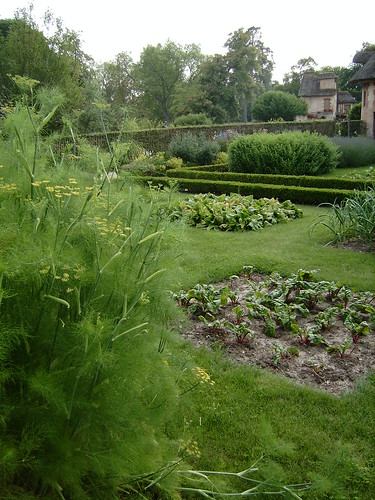
Looking at the Parsonage and its surroundings is a bit misleading, as now it is surrounded by trees, and the graveyard comes up to the parsonage garden like a moat. At the time the Brontes lived there, the churchyard was much smaller, and there were no trees. Rather the Parsonage was stuck up alone on the hill above the church, bare to the elements.

The church currently in Haworth is more recent than the Bronte's, although it sits in the same location. You can see in the picture above the series of gravestones set flat in the ground, which was the custom at the time. This was part of the problem.
By 1850, the general health of the population of Haworth was deplorable, with child mortality rates and life expectancies as poor as the worst areas of London. Life expectancy was a mere 24 years. The practice of recumbent tombstones prevented the interred corpses from decomposing properly, and the toxic run-off infected the water supply. After 1850 the tomb stones were placed upright, and trees were planted to aid in the decomposition as well. Measures were taken to improve the water, and the placement and quantity of privies. Too late for the Brontes--by then, only Charlotte and her father were left.

View from the church to the Parsonage. Notice the different stone placements.
Photographs are not permitted inside the Bronte Parsonage Museum, so we don't have any of those, only the sign in front.

And the former gateway:

The house itself is small, almost like a small ship, where everything is in its place. The best part are the artifacts, books, clothing, furniture, etc. that were the property of the Brontes. At first I was surprised that anything had survived--and then I realized I'd been looking at medieval architecture for the past week, and things that were only 150 years old shouldn't be rare.
Some of my favorites were watercolors of roses by Charlotte, and a head portrait by Emily of her dog, Keeper.

He was a very large mastiff which Emily dominated by the force of her personality. There is a famous story of Keeper in a vicious dog fight--so fierce that several men were afraid to intervene. Emily waded into the fight, put an arm around Keeper's neck and dredged pepper into both dogs' noses. She then drove Keeper home before her.
Keeper's collar is on display at the museum. Seriously, it's as big around as a dinner plate. That was a BIG dog.
Also on display at the time was a collection of Branwell Bronte's oil paintings. Branwell lived a rather tragic life, although among book lovers he's generally blamed for causing Anne and Emily's deaths. The popular understanding when I was in college was that the two sisters caught colds at Branwell's funeral and died within a few months. The story presented at Haworth was the Emily already had TB, but had refused to let on until she was too sick to hide it any longer.
Branwell is the painter of the famous portrait of the three sisters, and was supposed by them to be the "real genius" of the family. Looking at the portraits he painted, however, one has to wonder: was he really so talented, or was he the male? Realize that when the family moved to Haworth in 1820, there were six girls and one boy, and their situation depended entirely on their father. If anything happened to him, they would lose their home--it was, after all, the Parsonage, and if Patrick was no longer the pastor, they would have to turn the house over to his successor.
Thus Branwell was the logical "back-up" breadwinner for the family. The girls worked as governesses, and tried to start a school, but none of those efforts worked. They were simply not financially independent. Look at the situation as if it were "Pride and Prejudice" and think about the pressure Branwell must have felt to perform.
He also fell in love with a young married woman, which was bad enough, but when her husband died, she refused to marry him which seems to have broken his heart. It is from there that his drinking and opium use seemed to get out of hand. Although one only has to walk through Haworth to realize how easy it would be to do so. The church is only steps from the Parsonage, the pub is only steps from the church,


and the apothecary's is only across the narrow street.

Now it sells bath salts and retro and novelty gifts.
The Brontes themselves are buried under the church. There are a couple of markers.

Anne is not buried here, because after Emily died, it was decided to try a sea air cure for her. She traveled to Scarborough, died four days later, and was buried there.

The site of so much tragedy, Haworth today is undeniably charming.
The Sunday School building where Charlotte taught:

The view down the main road:

Charming stone houses:


And out behind the Parsonage are still the moors.

Given the poverty and miasma of ill health that pervaded Haworth in their time, it's not surprising that the girls preferred to head out over the moors for their exercise.

Although the land just behind the Parsonage is divided by dry stone walls into sheep pastures, walking paths remain that go out to a small waterfall, and the sites popularly supposed to be the inspirations for the houses of Wuthering Heights and Jane Eyre. We would have taken at least part of those walks, but we had a date with a Ghost Tour back in York, and reluctantly had to skip that part of the visit.

A close-up of the stone wall.
Instead, we had tea in a lovely tea room just a few doors up from the Apothecary's house, that had a gorgeous sweeping view down into the valley. Since none of us managed to take a picture of that, here is a picture of some more sheep.


























